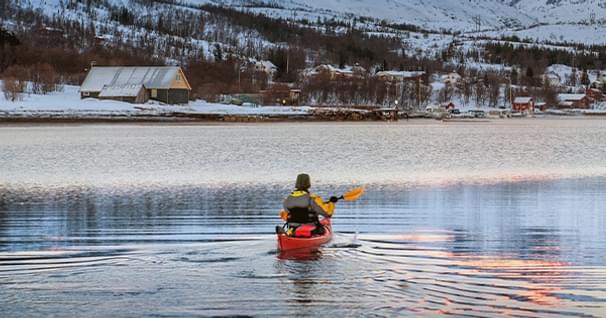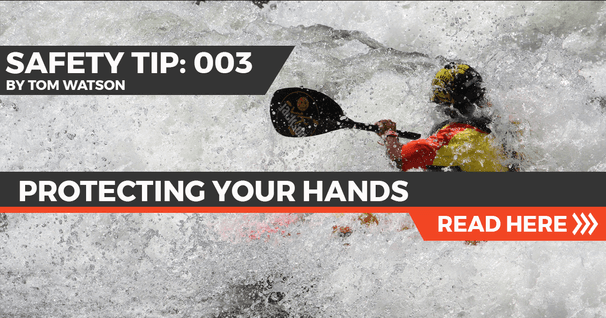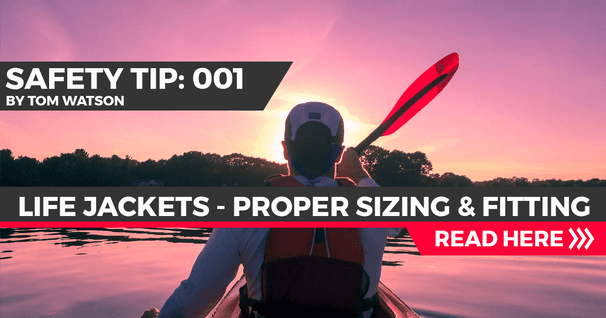Grab Your Gloves
For blue water paddlers, a good pair of paddling gloves is a standard piece of gear/wardrobe. Perhaps not always worn, but seldom left behind. Typically our hands are challenged by friction/grip, temperature of the air, windage, spray and other sources of wetness and the eventual immersion of the entire hand.
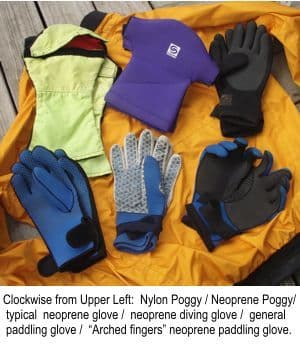
Inland paddlers don't seem to be as concerned about gloves as our coastal paddlers are especially when it comes to keeping hands dry and warm. However, as we approach dropping temperatures associated with our fall paddling season on interior coastal waters, it may be a good idea to review some options we have for protecting our hands while out canoeing or kayaking.
Image the first "gloves" being merely strips of hide wrapped around the hands of our prehistoric ancestors. Presumably in the course of completing a task while wearing this protective covering, a resourceful 'caveman' learned he could more easily pick up rough materials, handle hot items from the fire and feel generally warmer all over if his hands were covered accordingly.
Leap ahead several hundred millenniums to present day and the utility of the glove has changed little although the materials and fabrication of hand wear has clearly entered the twenty-first century. Today's glove or mitten is also multitalented in that they can perform crossover tasks at the same time. I could easily use my biking gloves while canoeing, and even though they are not waterproof, they would provide light, abrasion-proof protection against the paddle, as well as warmth from a chilling upper Midwest morning. On the other hand, I doubt I'd want to bike ride or paddle with gardening gloves. The choices in paddling are similar, though perhaps not quite as varied.
TAHE 10'6 & 11'6 SUP-YAK Inflatables
2-in-1 Kayak & Paddle Board complete packages for single or tandem use.
Land Use and Marine Use Gloves
For my outdoor interests I divide gloves into two groups: Land use and marine use. Land use is a broader field in that it includes all of the characteristics of a marine glove plus other attributes more associated with landlubber needs.
Functioning "land" gloves can be made out of cloth, leather, and a whole array of synthetics from nylon to neoprene. Those cheap cloth "gardening" gloves provide a lightweight layer of protection. You can often buy them by the packet. They work well as short-term camping gloves. One could bring some along for camp chores to save wear and tear (and burned holes) in more expensive gloves. Leather, of course, has more staying power, is stronger than cloth and wears like the horse from which perhaps it came!
Synthetics can be as tough and long lasting as leather, and like leather, can be designed to include a variety of added segmented surfaces for protecting specific parts of the hands (knuckles, wrists, finger tips, etc.). For example, if you use rope a lot, a reinforced palm is critical. Using tools or machinery might mean thicker layering on the fingers used to grip the machinery or to protect knuckles from the surroundings. I've noticed that seams give out faster on synthetic gloves: nylon, polypropylene, whatever) than on similar-styled leather gloves. The main advantage of most synthetic gloves is the fact that the material is usually waterproof. That implies, of course, that the integrity of that waterproofing is only as good as the waterproof seam sewn or applied in the construction process. I have a pair of synthetic gloves with a layer of Gortex integrated in the layering. So far they are as waterproof as my neoprene paddling mitts - and oh so warm!
Characteristics of Paddling Gloves
As a paddler I need to be able to keep a firm and controllable grip on paddle at all times. If I can't instantly feel the shaft and make it respond the way I need it to, when I need it to, I compromise my ability to be in control of my craft.
The best paddling gloves I found so far have the following favorable characteristics:
- They are obviously waterproof
- They have a non-slip surface for holding firmly onto the paddle shaft when necessary
- By preference, they are designed to naturally confirm to the shape of the human hand when its in a relaxed open position (slightly cupped with the fingers slightly curled downward). This shape mimics the natural position of your own hand and I feel causes less fatigue - especially when the glove isn't sized exactly right.
A glove that is too small puts pressure on the wearer's knuckles, which can cause pain and swelling. Size is usually measured around the width of the hand at the knuckles. Finger length is important, too. Too short and the glove puts too much pressure on the knuckle area, too, and fails to protect the wrist.
Check out reviews for Paddling gloves:
Poggies
Another excellent consideration for hand covering is the Poggy. These are mitt-like hand coverings that instead of being worn by the paddler, they are "worn" by the paddle shaft! They look like a large rounded mitt with a short tube-like collar extending from each side of the palm at right angles. A gauntlet-like cuff extends down just below the wrist of the wearer.
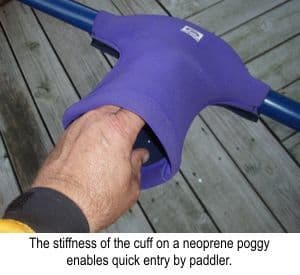
The paddler slips his/her bare hand (or while perhaps wearing a lighter glove when extracting your hands in colder weather) into the cuff of the mitt and grabs the shaft. It provides for warm, dry handling of the paddle (assuming you have good working drip rings on your paddle) while enabling the paddler to be completely bare hands-free upon withdrawing either hand from the poggy. Their one big drawback is that once you remove your hands from them (as in a capsize or other incident) you've exposed your bare hand to all the elements around you.
Poggies are usually made out of either nylon or neoprene. I prefer the later because the cuff is stiffer making it easier to insert/withdraw my hands individually. That's the key as far as I am concerned. Poggies with pliable nylon cuffs are almost impossible to "put on" if the cuff droops and collapses as you try to insert your fingers. A stiffer cuff, as is usually found on stiffer materials such as neoprene, holds its opening firm so insert is fast and simple. Both take some getting used to.
Relax Your Grip
One more thing about warm hands. Your digits and knuckles will stay a lot warmer if you relax your paddle grip periodically. That constant tightness, like a glove that is too small, can make your hands get cold much quicker than by having the appropriate-sized gloves to begin with, but also by using a relaxing grip, especially on your return stroke.
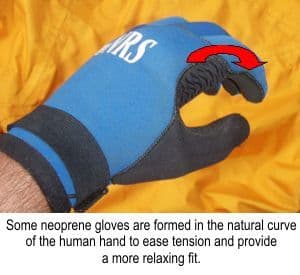
Paddlers who tend to just arm muscle their paddles for power instead of using their torso, too, tend to grab onto the paddle tightly with all fingers gripped firmly around the shaft. Besides causing blisters, this can lead to hands getting cold faster in cooler weather.
Instead, relax your grip on the return stroke by opening you fingers while you cradle the shaft into the meaty fold between the base of your thumb and index finger. Now apply that forward arm/torso forward motion while keeping your hand more relaxed. Upon complete extension, grab the paddle with your full grip and now open up your opposite hand and repeat the process on that side.
There's a saying among paddlers: "Dress for the water temperature, not the air temperature." This applies for hand protection, too. Like any piece of gear or tool, there is the right glove for the right kind of paddling environment and style. A conscientious paddle probably has several different pair in his/her on-water wardrobe.
Have fun and be safe out there!
Tom Watson is an avid sea kayaker and freelance writer. His books, "Kids Gone Paddlin" and "How to Think Like A Survivor" are available on Amazon. Tom posts articles, thoughts and paddling tips on his website: tomoutdoors.com/blog/
Related Articles
Gliding through glass on a crisp, winter morning can be an experience like no other. Whether we’re…
There is nothing worse than wet gear, so check out these great dry bags ranging from 5L to 105L. These…
Protecting or shielding your hands from the elements while kayaking makes gloves and other…
Adhering to the fundamental safety rule that a lifejacket should always be worn when out on the…

